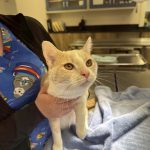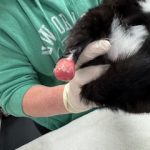Hello,
I’m sorry to hear about Captain. In puppies we worry about parvovirus, intestinal parasites, foreign bodies and eating something that doesn’t agree with them. With your pup I am not as concerned about the first two.
I am at the clinic first thing. We will fit you in.
Dr Magnifico














We have had a few patients that resolved this with a neuter. Have you talked about that? We have a bartered surgeon who can perform this if neutering doesn’t resolve it.
We have discussed it, I wasn’t aware that neutering alone would resolve the issue. Is that the case or is there a procedure that is done as well as neuterering? My only concern is his age, I have been told that he’s to young to neuter him. We did not intend on breeding him so that is absolutely something we are open to